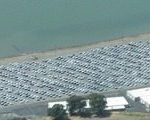I have reported in the past on the value of the Friday-Monday effect, whereby the bulk of the year's performance can be had through buying the Friday close in the stock market and then selling the Monday close. Well, I have discovered a further distillation of this phenomenon. During 2010, the S&P 500 rose by 143 points. Some 134 points of this was racked up on the first trading day of each month, some 12 days in total. That is 94% of the entire return for the year.
If can see where this is coming from. Many pension and mutual funds are completely devoid of any real trading expertise. So they rely on a 'dumb' dollar cost averaging models to commit funds. In a rising market, like we had for most of last year, this produces an ever rising average cost. More than a few hedge funds have figured this out, front run these executions at the expense of the investors of the other institutions. And you wonder why the public has become so disenchanted with their financial advisors.
The possibilities boggle the mind. Imagine strolling into the office on the last trading day of each month and committing you entire capital line. You then spend the night hoping that a giant asteroid doesn't destroy the earth. You return to your desk at the next day's close, unload everything, and take off on a 30 day vacation. Every month, you come back for a reprise. At the end of the year you top the performance leagues, and retire richer than Croesus. It sounds like a nice 12 day work year to me!

Is It Time to Trade Yet?



